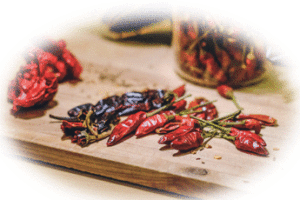
Saving seeds for next year
With the Chilli season coming to a close and Chilli harvesting in full swing in the United Kingdom, now is the time to start saving seeds for next season. With the hefty price that some seed suppliers charge for their seeds, this makes good financial sense. Besides, if you have plants that have done exceptionally well in the season, why not save some seeds for next year?
To successfully save seeds, choose fruit that is slightly overripe. The chances of the seeds being fertile are far more likely if they are at this stage of ripeness. Also, make sure you only chose pods that are healthy and not showing any signs of disease.
Once you have picked them, slice them in half and scrape them out of their pods. Try to scoop out as little of the white membrane when doing this, as not doing so can cause seeds to become mouldy during drying. This can cause them to become infertile
Once the seeds have been scrapped out of their pods, place them in a tea strainer under cold running water, and gently wash away as much of the placenta as possible. If this doesn’t, work try placing the seeds in a jar with some water, and shake them until any remaining placental tissue shakes loose from the seed.
The next step

Drying the seeds
Place the seeds on a piece of glass (a photo frame works well), and place them in the sun or on a gentle heat source to dry. Avoid drying the seeds beforehand with a paper kitchen towel, as these contain bleaching agents that may adversely affect the seeds.
Once the seeds are dry, label some envelopes with the date the seeds were saved and their variety. To prevent the seeds from absorbing water, which will make them want to germinate, store them with some desiccant like calcium chloride or silica gel to remove excess moisture.
to remove excess moisture.
If they are sown within two years, you should have viable seeds, which will turn into strong and healthy plants. If you want to keep the seeds for even longer, keep them in the refrigerator at the temperature of 5 degrees Celsius. Alternatively, store them in your freezer
Storing seeds in this way serves two purposes. Firstly, it will keep the seeds dry, but it will also emulate what happens in nature . The cold temperature will trick the seed into believing it is winter, which will make germination easier when the seed is sown.
It is a good idea to keep a journal of the seeds you have saved, as it is all too easy to forget what varieties of seeds you may have saved from season to season. It is amazing how seeds can to get buried at the bottom of a seed tin for years at a time. Out of sight, out of mind! This may lead to the seeds not being viable by the time you get around to planting them.
Finally
To ensure the integrity of the seeds you are saving it is best to start the process early in the season by covering the flowers of plants to prevent cross pollination. Using gelatine capsules to prevent cross-pollination of chilli plants is a clever and practical method employed by seed savers and chilli enthusiasts. By encasing the chili blossoms in these capsules, the chances of unintended cross-pollination are significantly reduced, ensuring the genetic purity of the Chilli varieties. This technique is particularly crucial for preserving heirloom and rare chili varieties, as it helps maintain the distinct traits and flavors that make each chili unique. By safeguarding the integrity of chilli seeds through gelatine capsules, enthusiasts can continue to cultivate, enjoy, and share these special chilli strains for generations to come.
Credit
Matt Simpson – The Chilli Book 2022
